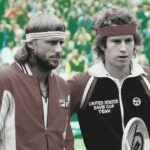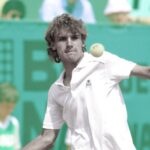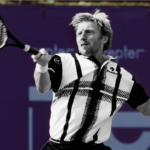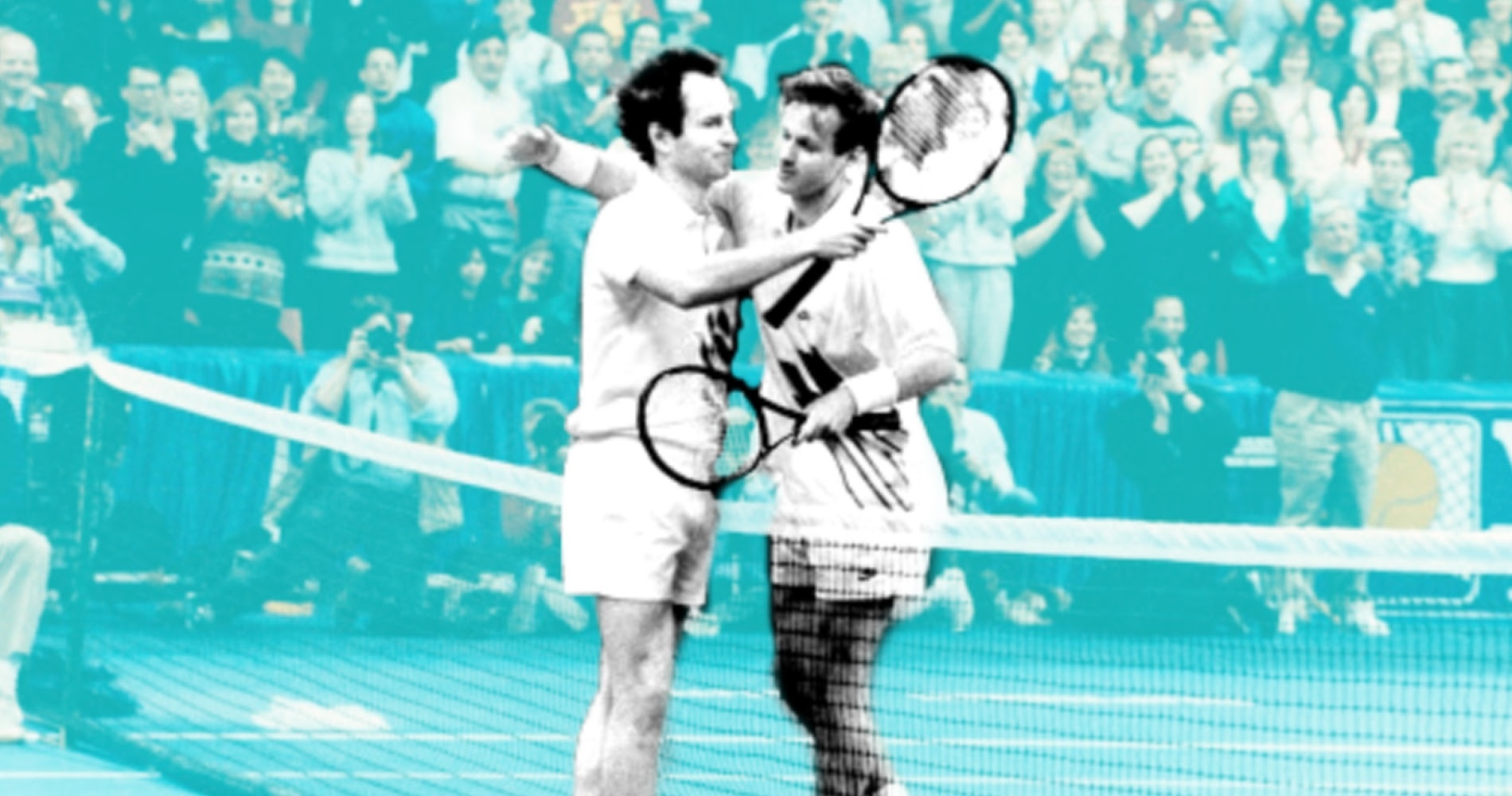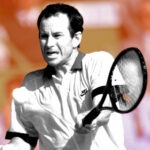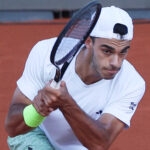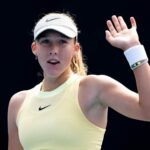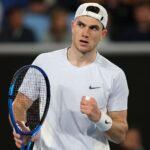August 26, 1986: The day John McEnroe lost in the opening round of the US Open for the first and only time
Every day, Tennis Majors takes you back in time to relive a tennis event which happened on this specific day. On this day in 1986, John McEnroe, on his way back after a six-month break from the game, was playing his first Major of the season at the US Open and found himself in unchartered territory
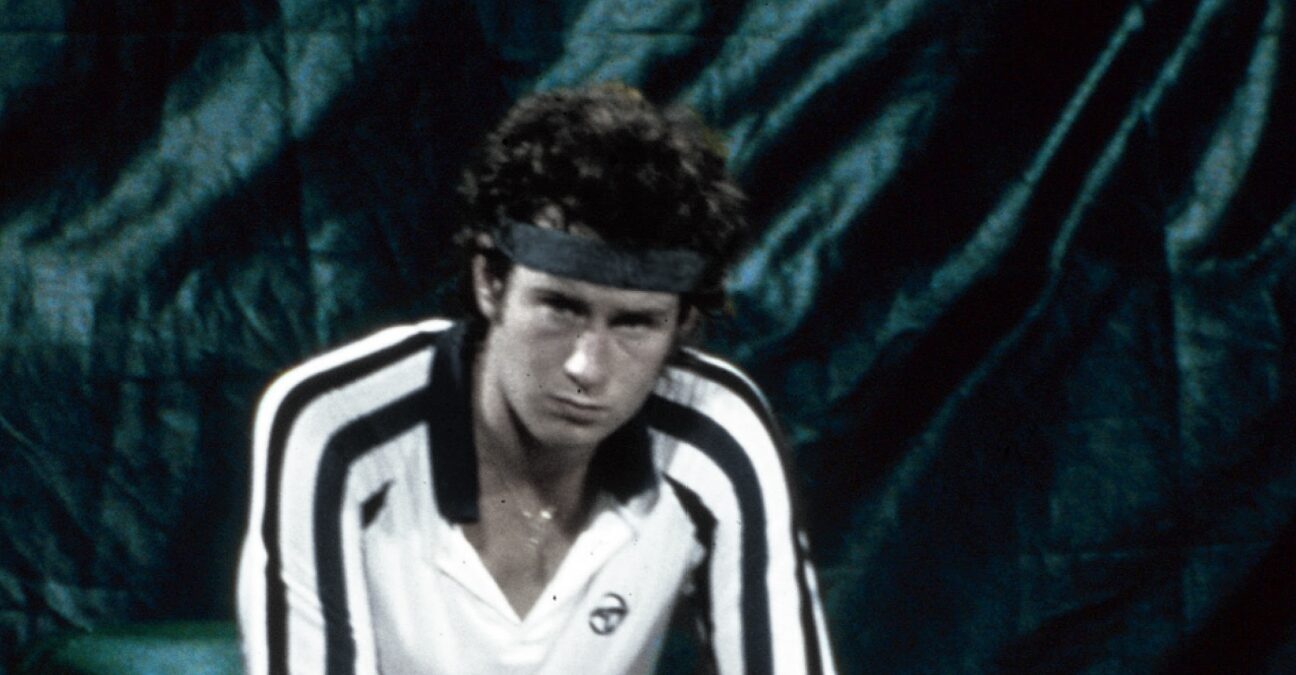 John McEnroe – US Open 1986
John McEnroe – US Open 1986
What happened exactly on that day?
On this day, August 26, 1986, John McEnroe was defeated in the opening round of the US Open for the first and only time in his career. The former world No 1 had returned to the game only a month earlier after a six-month break, and lost to fellow American Paul Annacone, ranked No 20, at Flushing Meadows 1-6, 6-1, 6-3, 6-3. In his post-match press conference, McEnroe, shattered by this unexpected loss, would question his motivation regarding the pursuit of his career.
The players involved: John McEnroe and Paul Annacone
- John McEnroe: the former world No 1 on his way back after a six-month sabbatical
John McEnroe, born in 1959, had been world No 1 for 170 weeks between 1980 and 1985. The American southpaw had claimed seven Grand Slam titles: three at Wimbledon (1981, 1983, 1984), and four in New York (1979, 1980, 1981, 1984).
In 1979, he became the youngest ever US Open champion, defeating Vitas Gerulaitis (7-5, 6-3, 6-3), and in 1980, he played his most memorable match in the Wimbledon final, where he lost in five sets against Bjorn Borg, after winning an epic tiebreak in the fourth set (18-16). His peak season came in 1984, when, after a heartbreaking loss in the French Open final, he went on to win Wimbledon, the US Open, the Masters Cup and the Davis Cup, finishing the year as the undisputed world No 1 with an incredible 82-3 record.
However, after 1984, McEnroe’s domination came to an end.
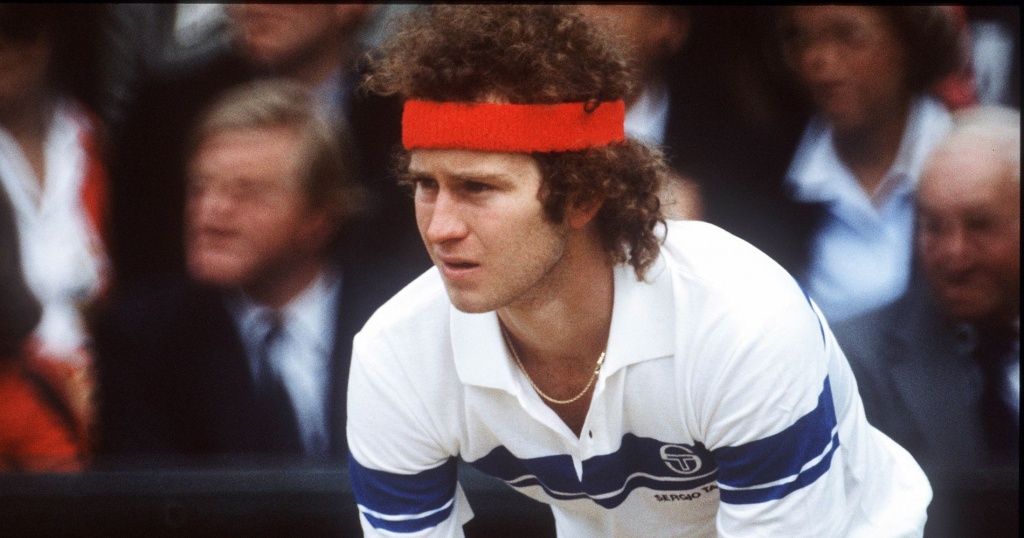
In 1986, mentally worn out, McEnroe took a break from the tour and married Tatum O’Neill. Still ranked No 7 in the world, he came back to the game in early August at the Stratton Mountain Open, where he seemed to be in a great shape, reaching the semi-finals, where he was defeated by world No 3 Boris Becker (3-6, 7-5, 7-6). However, the following week, the American suffered a surprising loss in Toronto to 35th-ranked Robert Seguso (4-6, 6-3, 7-5).
“Mac” was very talented, his game based on precision and touch on top of an iconic and lethal serve. He was also known for his outrageous on-court behaviour in the well-mannered world of tennis. He was often rude and his constant quarreling with the officials made him unfamous in a gentlemen’s sport.
- Paul Annacone: The American who reached the top 20 in singles and won the Aussie Open doubles title
Paul Annacone was born in 1963. He reached his best ranking on the tour as world No 12 in March 1986, a few months after consecutively claiming his two first titles on the tour in the autumn of 1985 – in Los Angeles (beating Stefan Edberg 7-6, 6-7, 7-6) and in Brisbane (beating Kelly Evernden 6-3, 6-3). Annacone’s game relied mostly on a powerful serve, which made him a tough opponent in doubles. The American partnered with Christo van Rensburg to win the title at the 1985 Australian Open, defeating Mark Edmondson and Kim Warwick in the final (3-6, 7-6, 6-4, 6-4). In August 1986, Annacone was ranked world No 20 in singles.
The place: The US Open
The US Open (known as the US Nationals before 1968 and the start of the Open Era), was established in 1881. Although it is the only Grand Slam to have been played every single year without an interruption since its beginning, it moved locations several times throughout the 20th century. First held in August 1881 on grass courts at the Newport Casino on Rhode Island, the tournament moved to New York in 1915, where it was held at the West Side Tennis Club at Forest Hills until 1977 (with the exception of years 1921-1923, when the event was moved to Philadelphia).
In the years 1975 to 1977, the tournament was played on clay. In 1978, the US Open left the West Side Tennis Club, which was now too small for such an marquee event, and settled into the USTA National Tennis Center, located in Flushing Meadows, New York. At the same time, it was decided to change the surface to hard courts. The National Tennis Center was one of the biggest tennis complexes in the world: its Center Court was the Louis Armstrong Stadium, which had a capacity of 14,000 spectators.
The facts: Annacone seemed almost embarrassed after the win
In August 1986, John McEnroe was coming back to the tour after staying away during the first half of the season. Disgusted after his loss against Brad Gilbert at the Masters Cup (5-7, 6-4, 6-1), the four-time US Open champion had decided to take a step back, using his time off to marry Tatum O’Neal and welcome their first child, Kevin. His original plan was to recover, spend time with his family, train and come back stronger than ever.
After a good start at Stratton Mountain, where he lost in the semi-finals after holding four match points against Becker, it seemed like his plan could actually work. The following week though, in Toronto, McEnroe was defeated in the second round by Seguso, a doubles specialist. At the start of the US Open, the pundits did not know what to expect from Mac.
Facing Paul Annacone, who had never won back-to-back singles matches at a Grand Slam tournament, McEnroe made the best start possible and won the first set, 6-1, against an opponent disoriented by the dimensions of the court. The momentum changed in the second set with Annacone finding his marks, especially on serve. In total, the world No 20 fired 23 aces that day. Soon, word spread around the USTA Tennis Center that McEnroe was about to be ousted in the first round of the US Open for the first time in 10 appearances.
Annacone took the three next sets without facing much resistance from the previous year’s runner-up, 6-1, 6-3, 6-3. The crowd could not recognise McEnroe; where were his sharp volleys, his great serve (he hit only three aces in the match)? And, most of all, where was his fighting spirit? Mac spent the entire match mocking himself, as if he wasn’t involved enough to get angry as in the good old days.
A disheartened McEnroe appeared later in the conference room. “I really didn’t expect this,” McEnroe said, according to The New York Times. “I came into the match in a reasonably good frame of mind. I have to look at myself in the mirror and ask whether I have the enthusiasm. There’s not much sense in pretending it’s there.”
“It’s not working out the way I had planned,” he added, quoted by The Los Angeles Times. “I ended up probably losing too much weight. Now I’m not nearly as strong as I should be.”
“That’s something that I have to look at,” said the former world No 1 as a dire conclusion, when asked about the idea of retirement.
Meanwhile, Annacone seemed almost embarrassed after an unexpectedly easy win against such a champion. As reported by The New York Times, he explained: “I felt kind of awkward beating him. He’s a great champion. He’s entertained so many millions of people and done so much for the game. I want to see him come back, but I feel he’s got to get some more matches under his belt. You’ve got to give him some time.”
One thing was sure : McEnroe’s return to the game was not going as planned, and his ranking was going to drop outside the top 20 (No 21).
What next? Annacone becomes a G.O.A.T. coach while McEnroe enters the Hall of Fame
Paul Annacone would be defeated in five sets in the next round by 19-year-old Aaron Krickstein, ranked No 38 (4-6, 4-6, 6-3, 6-4, 7-6). The highlights of his Grand Slam career in singles would be reaching the fourth round at the 1987 Australian Open (lost to Pat Cash, 6-4, 6-1, 6-7, 1-6, 6-2) and at Wimbledon in 1988 (lost to Becker, 6-3, 6-4, 6-4). Once his career finished, Annacone would become a successful coach, known for his Grand Slam winning collaboration with Pete Sampras and later Roger Federer. He is currently working with American Taylor Fritz.
John McEnroe would not retire in 1986. The end of his season would be promising. In the autumn, he would claim three consecutive titles – Los Angeles, San Francisco and Scottsdale, twice beating fourth-ranked Stefan Edberg. He would finish 1986 as world No 14, his lowest year-end ranking since 1977. However, “Mac” would never obtain the same remarkable results and would not reach another Grand Slam singles final in his career.
His last remarkable result before he retired from professional tennis would be reaching the 1992 Wimbledon semi-final (lost to Andre Agassi, 6-4, 6-2, 6-3). Despite his decline, McEnroe would never again be defeated in the first round of the US Open, reaching the semi-finals for the last time in 1990 (beaten by Pete Sampras, 6-2, 6-4, 3-6, 6-3). McEnroe retired from the professional tour at the end of 1992, ending his singles career ranked No 20 and made a few sporadic appearances on the circuit in the years after that. He was inducted into the International Tennis Hall of Fame in 1999.
